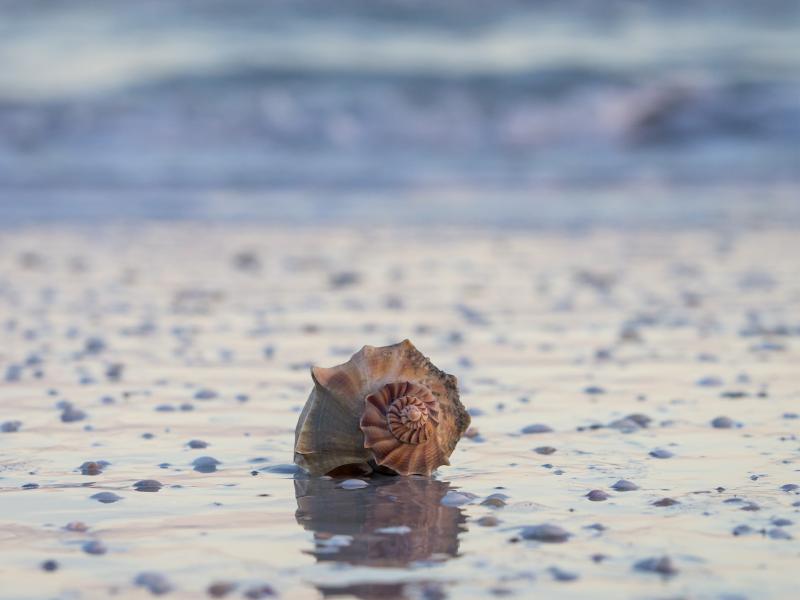When Natosha Norwood Carmine was growing up in Millsboro, she can’t remember ever having heard conversations about being Native American or a Nanticoke. Decades later, she’s the chief of the Nanticokes, having first been elected head of the tribal association in 2015.
We’re walking in the gentle surf along Lewes Beach early on a quiet morning. “We were a river people,” Carmine said, explaining how the tribe was centered along what was later named the Indian River near Millsboro.
I ask her what she sees as she looks out over the bay beach.
“Peace. Calming. Refreshment. Clearing the mind. Water taking you up the state of Delaware.” She pauses. “To me, this is us.”
The beach in Rehoboth, in contrast, makes her think of ‘the elders’ and a time not to be proud of. That was when the state closed the three Native American one-room schools (her grandmother taught in one of them), and concerned parents sent their children to the Indian school in distant Lawrence, Kansas, carrying “a cardboard suitcase with everything they owned.” She remembers her father selling pecks of tomatoes to townsfolk, because “My mother couldn’t go in the restaurants.”
Carmine is the first woman to head the tribe. She hadn’t realized or even thought about that until reporters started calling and asking how it felt to be the first female chief. Her response: “Compared to what?”
The indigenous people ‘discovered’ by Capt. John Smith in his 1608 exploration called themselves Kuskarawaok; they would later be known to colonists by their Algonquin language word as Nantaquak, “people of the tidewaters.” They were one of the largest tribes on the Eastern Shore, 200 warriors and their families.
The language became extinct in the mid-1800s with the death of the last fluent speaker, but per Thomas Jefferson’s order in 1792, some words were recorded. I ask how to say hello: “Ewenetu.” Thank you: “Wanishi.”
A linguistic scholar who’s had success reclaiming other Native American tongues is currently working on Nanticoke. “If you have your language, you will have your youth and your people.”
She adds “Gitchimanatu” to my vocabulary list, “creator.”
The Nanticoke moved their villages of dome-shaped wigwams (frames covered with cedar bark or woven marsh grass) with the seasons, going to inland hunting grounds in winter. With warmer weather, they went to tidewater country where women farmed corn and beans that were dried for later use, as well as squash, tobacco and pumpkins. The bay waters were fished for clams, oysters, mussels and eels.
It was access to the ocean that gave the Nanticoke their commercial competitive advantage vis-à-vis the other tribes upcountry with whom they traded. Whelk shells washed up in the sand were harvested, then they worked the purple parts into beads. These were highly valued for ceremonial dress, and as wampum, they would be exchanged for bear and beaver pelts used for hats and blankets.
“The best merchants of all,” was Captain Smith’s description of the Nanticoke.
A real estate paralegal by profession, Carmine was concerned that she didn’t know enough about Nanticoke history or traditions when approached to head the association, which now has some 600 members. Others convinced her, though, that she was particularly well suited to help expand the tribe’s organizational and financial foundations. “Nanticoke is something to be proud of.”
We get to discussing whether tribal culture influences her style as chief, which might be summed up in her adage, “Life is a journey; each day is a path.” She puts a premium on the collective wisdom reached through group decision-making – passing the figurative talking stick so all get to speak. “You get in trouble when you keep things inside; it’s better to have more outside than inside.”
In a meeting or discussion, she’s learned it’s much more effective to ask, “How do you feel” about a subject rather than, “What do you think?”
Making history, personal or tribal, takes commitment, action, and time, she says. “Listening is a big responsibility. … Right action requires passion. … With time, what’s meant to be will be.”
As she speaks, I think to myself that some enterprising management consultant could teach executives about Carmine’s Principles of Nanticoke Leadership: “Know the truth; know the facts; know the benefits and burdens; put the good into action.”
As we are leaving, Carmine reminds me about the 43rd annual Nanticoke Powwow taking place Sept. 11 and 12 at Hudson Fields near Milton, a new site this year.
Although the conspicuous location will make it easier to attract more visitors, some in the association argued that the venue had no connection to the tribe. She disagrees: “We’ll put our footprints on the ground.”
As we prepare to separate, she tells me, “I’ll say goodby in our way: An honor to be with you.”




















































